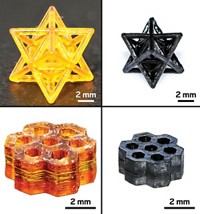Advertisement
Grab your lab coat. Let's get started
Welcome!
Welcome!
Create an account below to get 6 C&EN articles per month, receive newsletters and more - all free.
It seems this is your first time logging in online. Please enter the following information to continue.
As an ACS member you automatically get access to this site. All we need is few more details to create your reading experience.
Not you? Sign in with a different account.
Not you? Sign in with a different account.
ERROR 1
ERROR 1
ERROR 2
ERROR 2
ERROR 2
ERROR 2
ERROR 2
Password and Confirm password must match.
If you have an ACS member number, please enter it here so we can link this account to your membership. (optional)
ERROR 2
ACS values your privacy. By submitting your information, you are gaining access to C&EN and subscribing to our weekly newsletter. We use the information you provide to make your reading experience better, and we will never sell your data to third party members.
Analytical Chemistry
Peering Inside An Exploding Battery
Battery Safety: High-resolution X-ray tomography coupled with thermal imaging provides detailed 3-D view of thermal runaway in a battery while it occurs
by Mitch Jacoby
May 4, 2015
| A version of this story appeared in
Volume 93, Issue 18
By coupling high-speed X-ray tomography and thermal imaging methods, researchers have demonstrated that events occurring inside a lithium-ion battery as it heats up and explodes can be imaged in high resolution and real time (Nat. Commun. 2015, DOI: 10.1038/ncomms7924). The three-dimensional imaging method provides a novel way to investigate heat-induced damage to internal structures of Li-ion batteries, which could lead to improved battery safety. Standard analytical methods are limited to scrutinizing the internal components of failed batteries only after the events that caused the failure have run their course. So a team led by Paul R. Shearing of University College London devised the tomography method and used it to study two standard types of commercial Li-ion batteries as they heated the battery shells to roughly 250 °C. One battery, strengthened with an internal support, remained largely intact until chemical reactions triggered thermal runaway. The internal temperature then spiked above 1,000 °C, melting copper structures inside the battery. The other battery simply exploded, blowing off the battery cap and ejecting molten material.





Join the conversation
Contact the reporter
Submit a Letter to the Editor for publication
Engage with us on Twitter